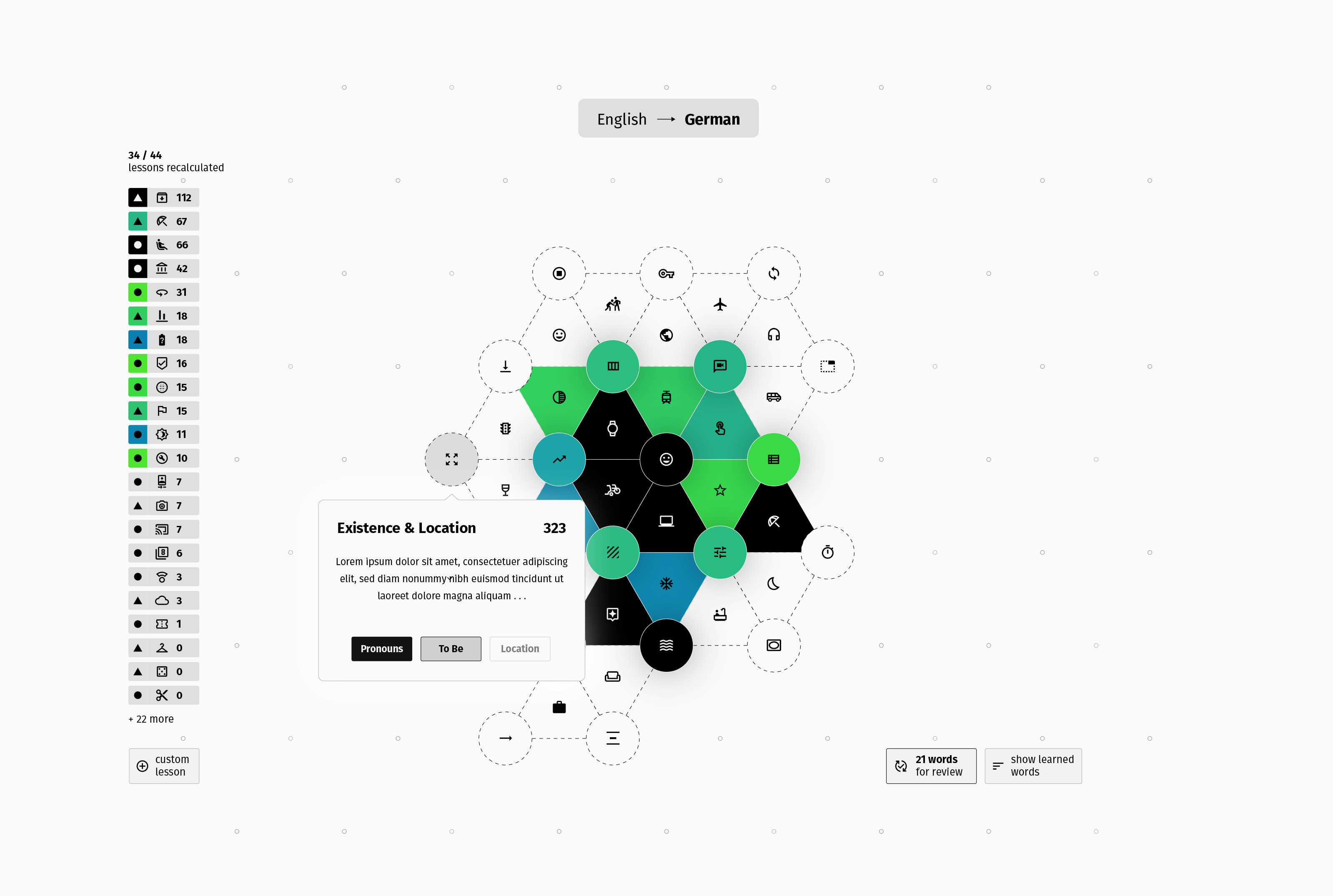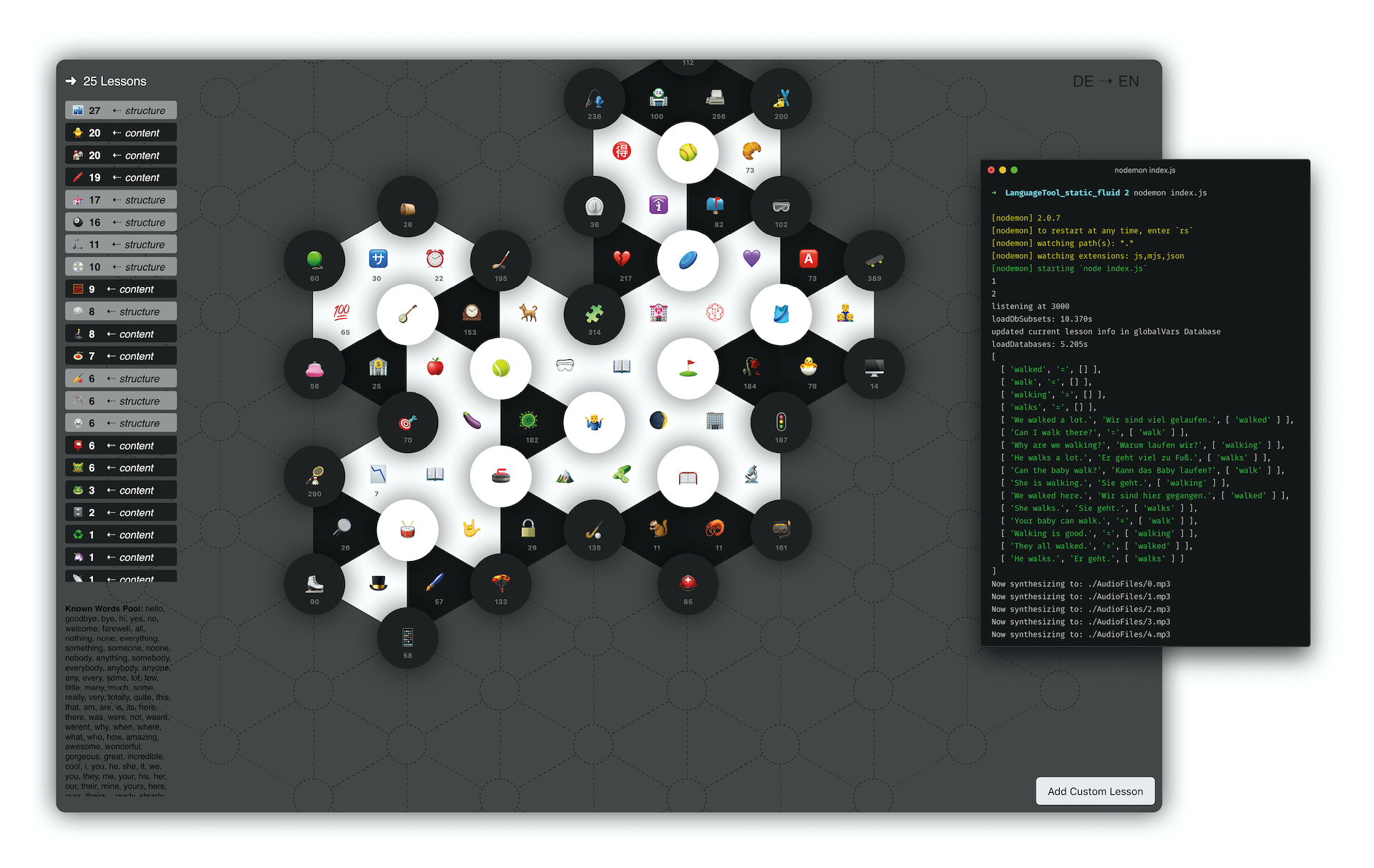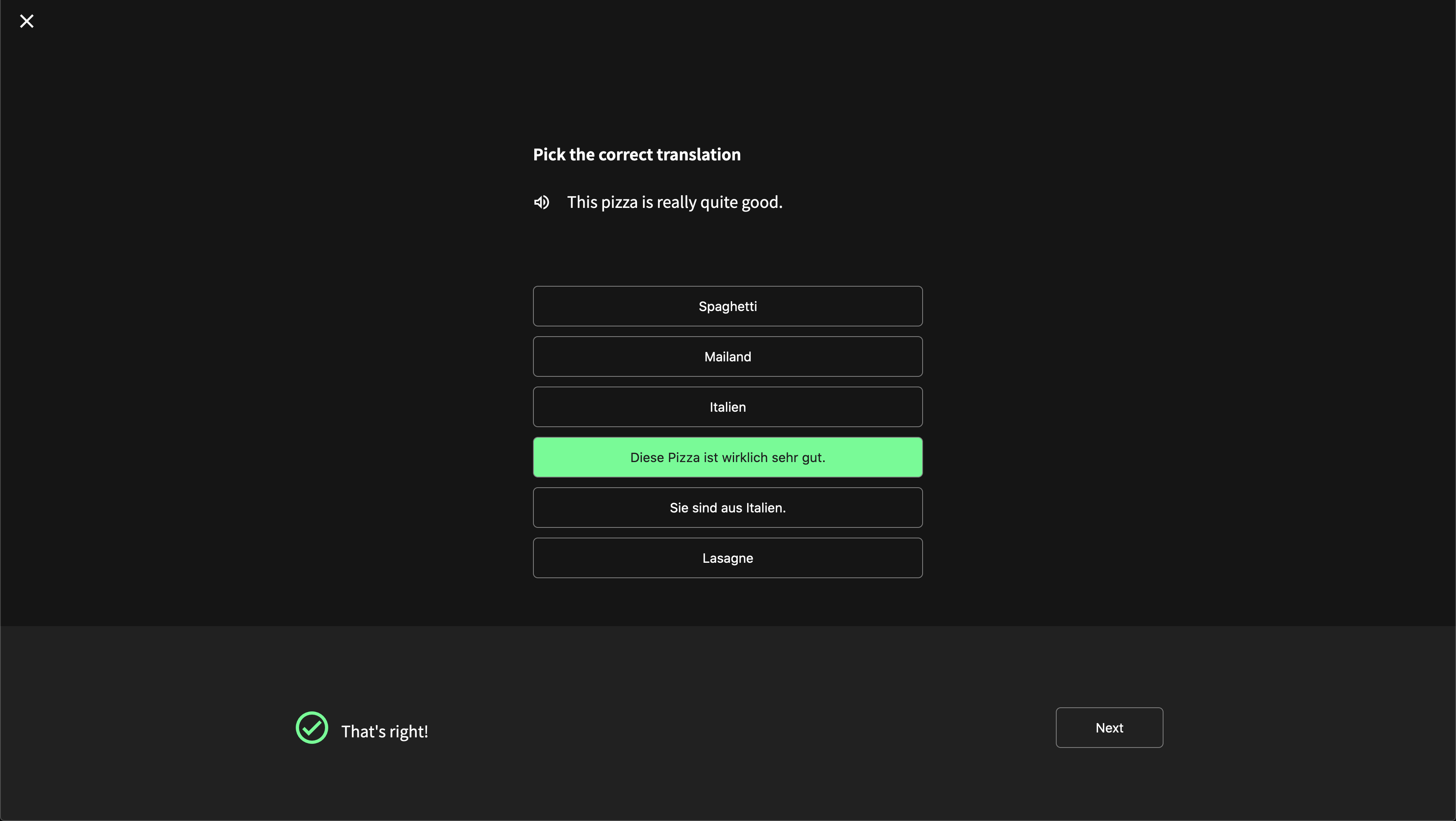Inspired by the principles of Montessori education I conceptualized and
developed a software application for self-determined language learning
that uses computational methods to liberate users from the constrained
practices of conventional education still found in many modern learning
environments today. Instead of having to learn a language in a strictly
linear way, the application allows learners to aquire a foreign language
on their own terms: Using the app, users are constantly given choices to
determine their personal learning path. To enable this, I designed
algorithms that ensure no matter what choices are being made, the
structure of the curriculum and the learning content of lessons
constantly adapt accordingly. This creates a dynamic learning experience
where learners are free to explore, yet new lessons always coherently
connect to what has been learned before.
The work is an
ongoing research project. At present, it is more of an experimental
software platform for the development of computational methods for
non-linear language learning. Usability and user experience questions
are only barely adressed at this point and may play a larger role in the
future.

Concept graphic illustrating the structural make up of the application. This state of the UI is supposed to reveal the technical workings of the application and will likely change with ongoing progress as usability aspects will play a greater role in the development of the application.
With ongoing progress the curriculum dynamically adapts to the individual choices of the learners. This results in an entirely different language course for every user.

Prototype created as a web application with a Node.js backend running in a Browser
In the center of the web app interface lies the course structure. Instead of having to passively follow a linear course structure, learners can take different learning directions and actively construct their personal language skill. This means that depending on the choices learners make, every course structure will look differently, reflective of the learners individual abilities. White lessons have been already finished, Gray lessons are yet to be taken. When a new lesson has been accomplished, an algorithm analyzes the learners newly expanded knowledge and uses it to find new lessons that fit best with the learners current skill and adds them to the course structure.
Watch the technical prototype in action
When selecting a lesson, a pop-up window will display relevant information such as an introduction and explaination of the subject matter the learner will face in this lesson. Additionally, a sidepanel can be opened that reveal which sentences will be used in the lesson to teach its concepts. These sentences have been algorithmically selected and reflect the individual skills of the learner that have been previously acquired. If the learner would have decided to take a slightly different learning path before this lesson, these sentences may differ and reflect this path.

Lesson overview with placeolder icon, title, and description. A list of algorithmically selected sentences to be used as teaching material for providing context for the concepts taught in this lesson are shown on the right
Entering the learning session, learners are asked to continuously answer quiz questions and complete tasks to train themselves on the new subject matter. In the future, a wider range of question types should be used, such as cloze tests, audio recognition tests, and writing tasks.

because of its unique approach of dynamically assembling lessons with the help of algorithms, learners can easily create their own sets of custom lessons with topics that are of great interests to them. These lessons fuse with their previous learning process and seamlessly integrate into the existing dynamic curriculum


Due to its unique technical architecture courses for other languages can be added without a lot of effort: